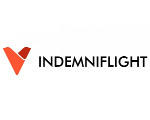Forms of public transport
In Germany there are several forms of urban public transport. They tend to serve different purposes and destinations.
The rapid transit railway (S-Bahn), for example, is a network of commuter trains that connects the suburbs with the city center. It can be found in more than 15 German cities (such as Berlin, Hamburg, Munich, Nuremberg, Stuttgart).
The city railway (Stadtbahn) and the metro (U-Bahn) serve as a relatively fast interurban transport. The city railway is a combination of tram and metro networks that is present in 17 cities in Germany (e.g. Bonn, Cologne, Düsseldorf, Stuttgart). Metro networks are operated in Berlin, Frankfurt, Hamburg, Munich, and Nuremberg.
The tram (Straßenbahn) is the most common interurban transport system in Germany, but isn’t always the fastest. However, the tram networks tend to cover the most important areas and they are present in many cities.
Bus networks can be found in almost any city.
You can check here for German cities with their respective public transport system.
Fares
Public transport fares in Germany can be pretty expensive. In Berlin, for example, a one-way ticket (valid for two hours) can cost between €2.60 and €3.20, depending on the tariff zones you travel in. A one-day ticket is €6.70. The upside is you can use the tickets for all forms of public transport, the S-Bahn, the U-Bahn and the buses. To give you an impression of ticket fares, here the five cities with metro service and the respective fares for single and one-day public transport tickets:
| City | Single ticket | One-day ticket |
| Berlin | 2.60 | 6.70 |
| Frankfurt | 2.60 | 6.60 |
| Hamburg | 3.00 | 7.30 |
| Munich | 2.60 | 6.00 |
| Nuremberg | 1.70 | 4.30 |
Further information
For more detailed information, or if you need more information on public transport in a certain city, just check the Internet. Most German public transport providers in each major city have home pages in English as well.


